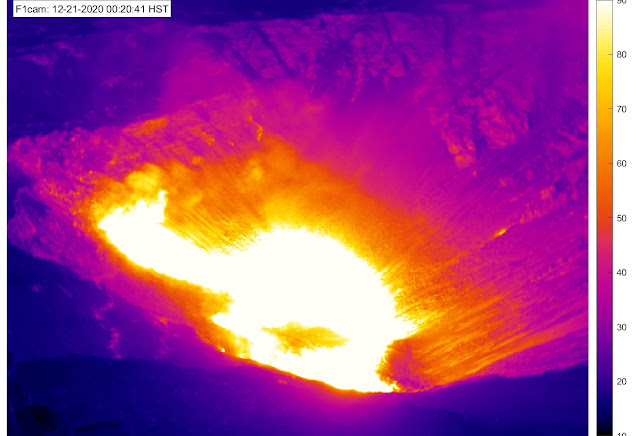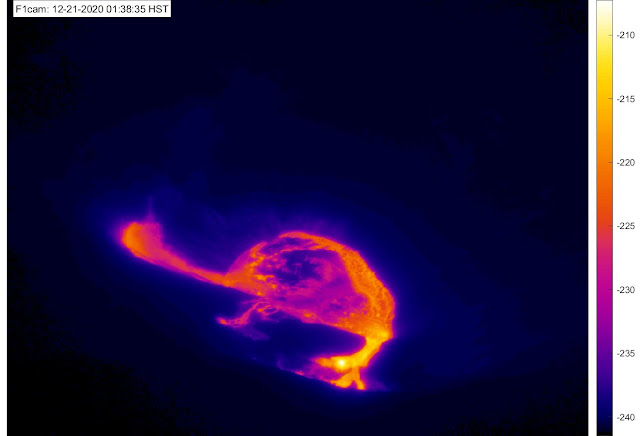Well...it had to happen sooner or later... on this Ke Alanui Polohiwa a Kanaloa, the winter Solstice, as I sit and type, Pelehonuamea is visiting Halemaʻumaʻu. Again.
She appeared late yesterday (Sunday night). Not sure of the time yet, but Iʻm certain our friends at the Hawaiian Volcano Observatory will post details tomorrow. I left my house and was opening my car door during the 4.4 ʻōlaʻi we had at 1036. Heard rattlings in the house, but didnʻt feel it, even though I was standing still.
Judging from the location shown above, it was another aftershock of the M6.9 we had in May 2018, and Iʻd guess is unrelated to the current eruption.
Drove up to the Kīlauea Overlook. Different iPhones, different images. Top one is courtesy of friend CS, and the one below that is mine.
And then we have a webcam image from the tower at HVO.
Note that while thereʻs a whole lotta glow going on, She remains hidden, except for the webcams on the south rim of the Lua.
The link above provides several different views, though keep in mind high traffic may slow the loading of images.
Same view below, though because itʻs not a thermal image, the lava is a bit better defined.
Please, please note that viewing is limited to Her glow. No red pele can be seen, and daytime views will be limited to billowing clouds of fume. And, please remember that no one can say when Pele will take a break again.The Tilt graph above, from the Deformation website page of HVO is at UWE (Uēkahuna) near the former HVO and Jaggar Museum. Seems that a decline started at about 3p yesterday afternoon, and has not declined appreciably.
Detailed Description
An eruption started at Kīlauea summit on December 20 at approximately 9:30 p.m. HST with multiple fissures opening on the walls of Halemaʻumaʻu crater. The lava cascaded into the summit water lake, boiling off the water and forming a new lava lake at the base of the crater. The northern fissure, pictured, was producing the tallest lava fountain at roughly 50 m (165 ft), and all lava was contained within Halemaʻumaʻu crater in Kīlauea caldera. USGS photo.
And Iʻll leave you this morning (!) with two webcam images... About the same time.
We shall see what the morning brings.
Till then, and as always, with aloha,
BobbyC
maniniowali@gmail.com










No comments:
Post a Comment